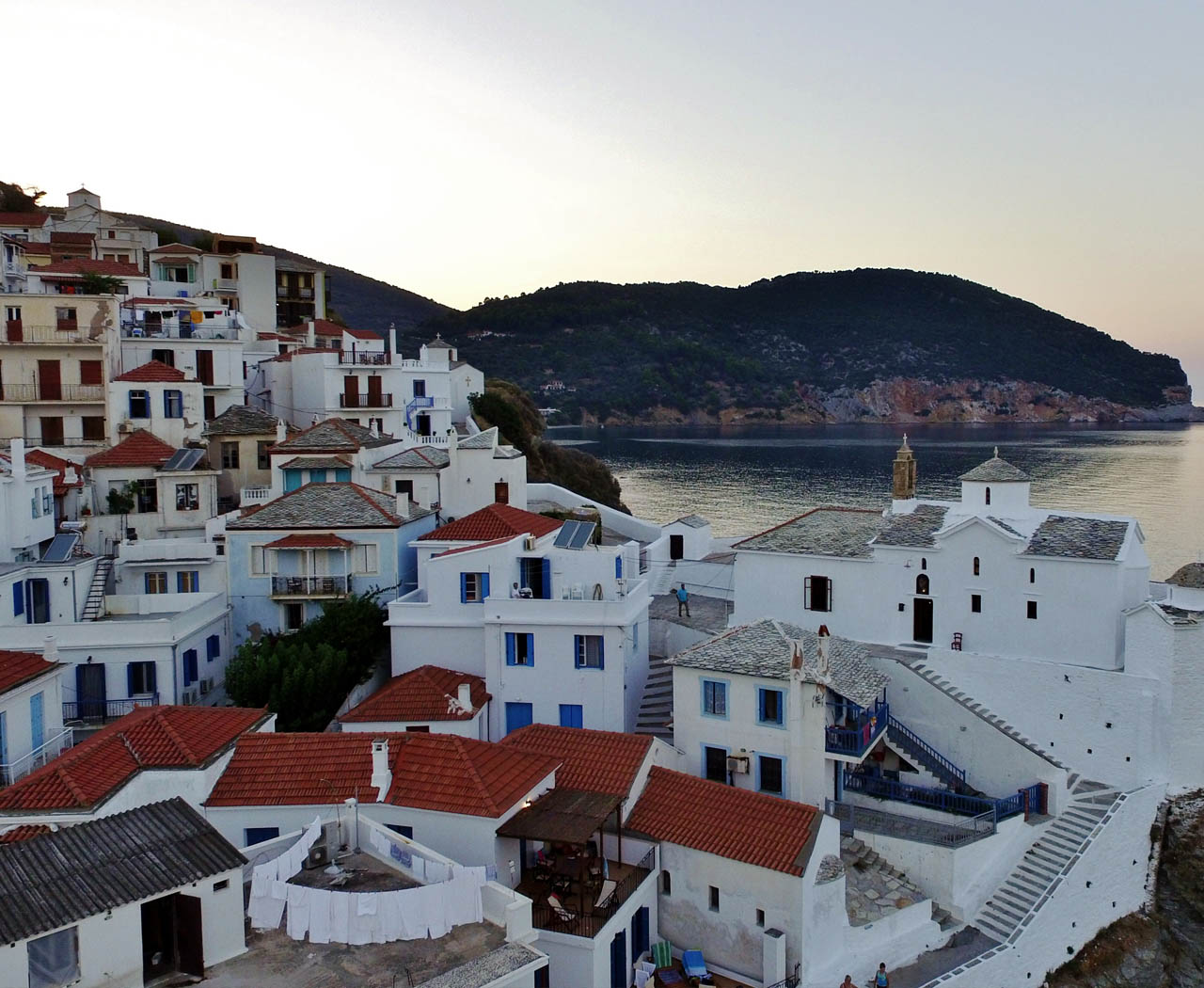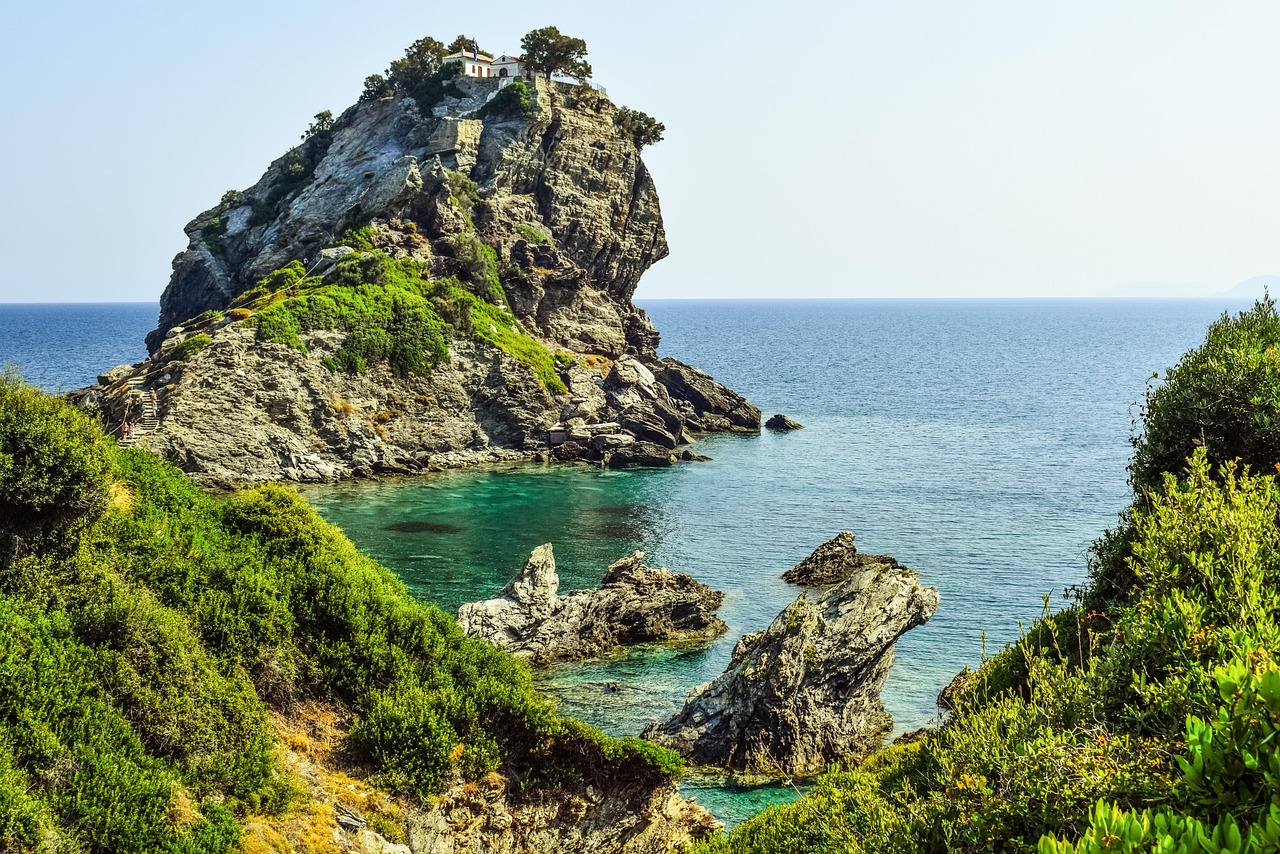In the 16th century BC, the town of Skopelos appeared under the name Peparethos. It was founded by the Cretans who arrived on the island, bringing with them the cultivation of olives and vines.
Skopelos Town impresses every visitor with its majestic appearance and small picturesque streets! It’s no coincidence that the overwhelming majority of tourists talk about “love at first sight” as soon as they catch sight of the town when the ship approaches the port. There are many beauties in the town and even more paths to discover it.
A beautiful route begins from Pigadaki, above the beach of Chora, heading towards the Venetian Castle dating back to the 13th century, created by the Gizi family. Today, remnants of its walls are preserved, which will “reward” the hiker with the unique view they offer from this point. At the top of the Castle, one can visit the tavern of Mr. Georgios Xintaris, one of the last authentic representatives of rebetiko music! Descending the steps, there are many small chapels one encounters, while the positive energy of Chora is palpable! In Chora of Skopelos, the house of the writer Pavlos Nirvanas (next to the church of the Three Hierarchs), the exhibits of the Bakratza Mansion, the Folklore Museum in the center of Chora, and the archaeological site of the Asclepius, located to the right of the port in the area of Ampeliki, stand out.
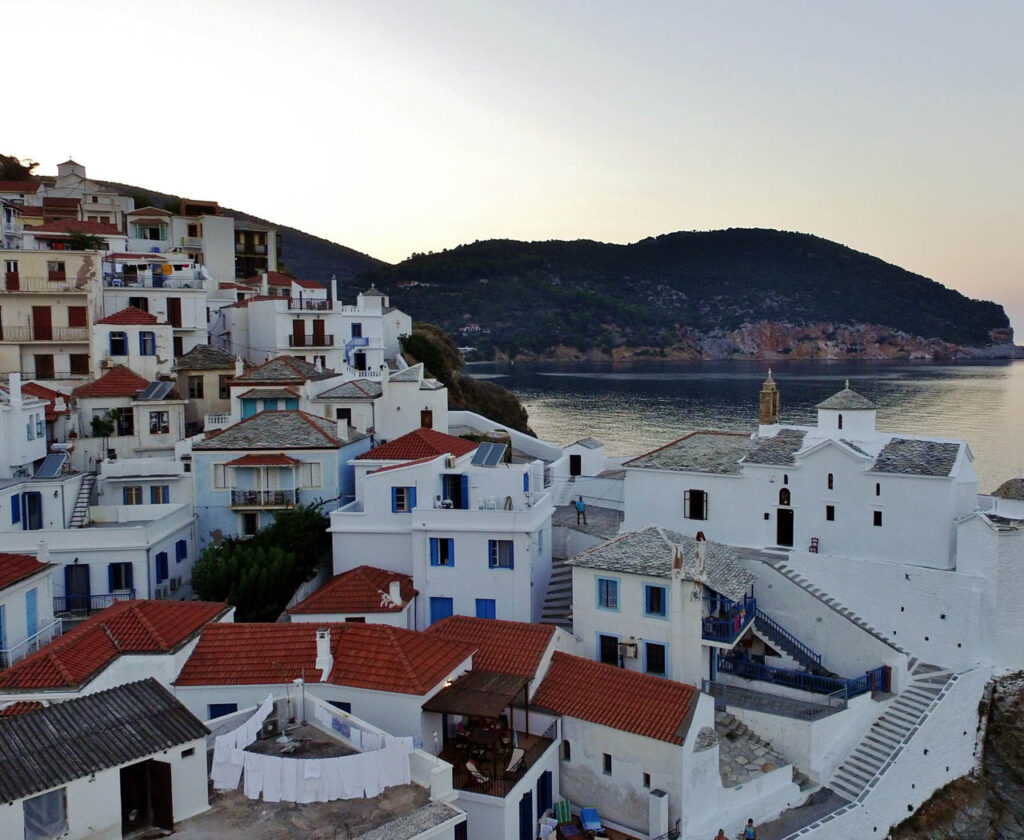
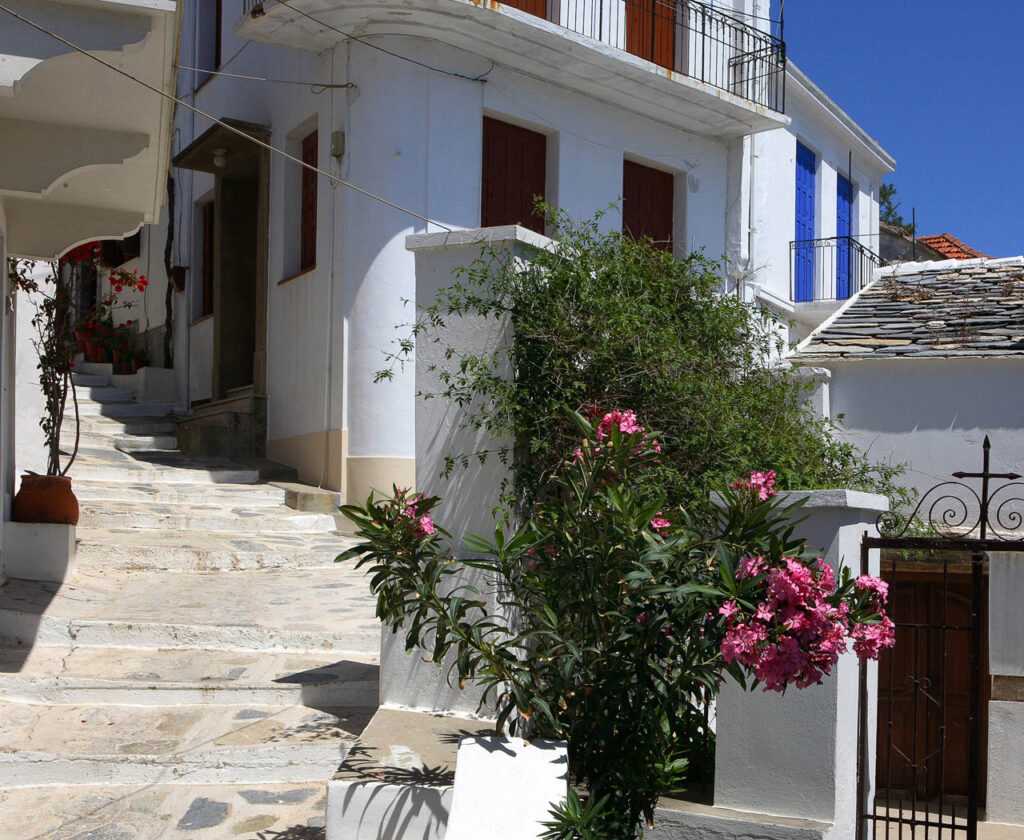
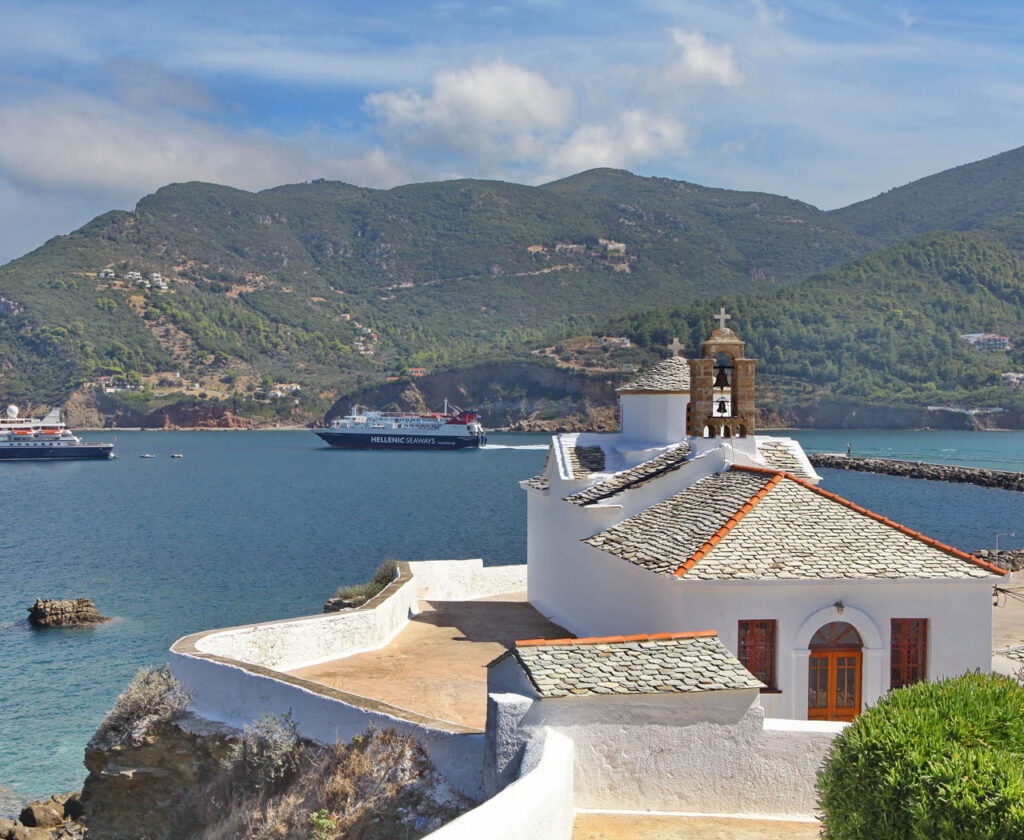
Another wonderful route in Chora includes the ascent from Panagitsa of Pyrgos – at the edge of the harbor – to the Castle. This route is simultaneously a “journey” into the past.
Whichever route one chooses, the Panagitsa of Pyrgos “steals the show”! The picturesque, beautiful church is perched on a rock at the entrance of Skopelos harbor and is one of the first impressive sights that are “etched” forever in the mind and heart of the visitor upon arriving on the island. The church’s design is complex, cruciform, and its dome is supported by four columns located in the main church. The iconostasis dates back to the 17th century and features scenes from the Old and New Testament, with intricate decorations of carved flowers and birds around the frames of the saints’ icons.
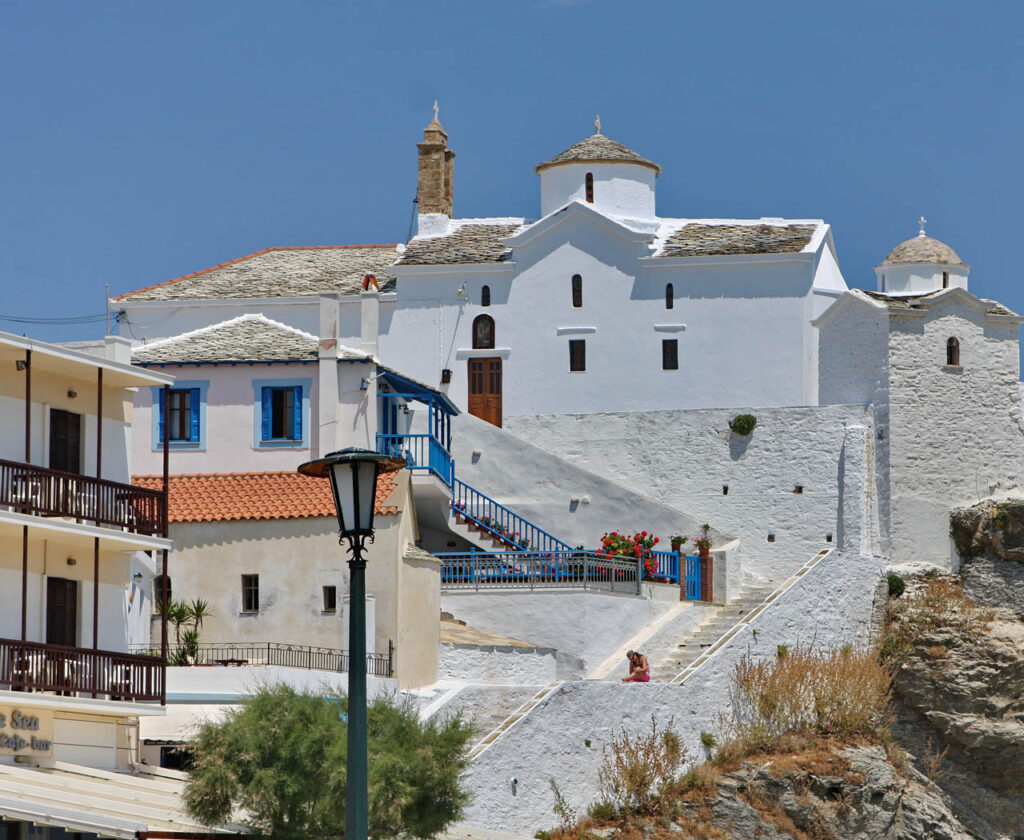
It is worth noting that one of the main elements that contributed to the declaration of Skopelos as a traditional settlement was its architecture. Skopelos consists of a blend of architectural styles. Two are the “hallmarks” of Skopelos houses, the schist roofs of the houses and the numerous churches, and the neoclassical elements.
Additionally, the layout of Skopelos exudes its own “charm” through its adaptation to the elevation differences, its amphitheatrical arrangement which offers the highest possible percentage of view, sun, and air, and the few vaulted passages.

